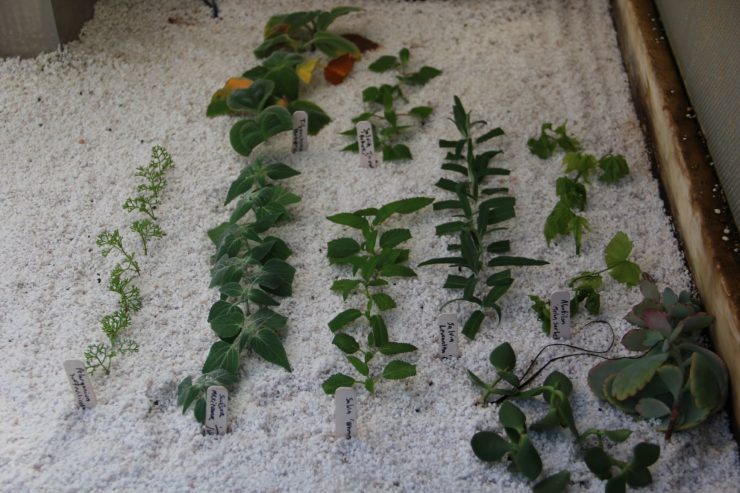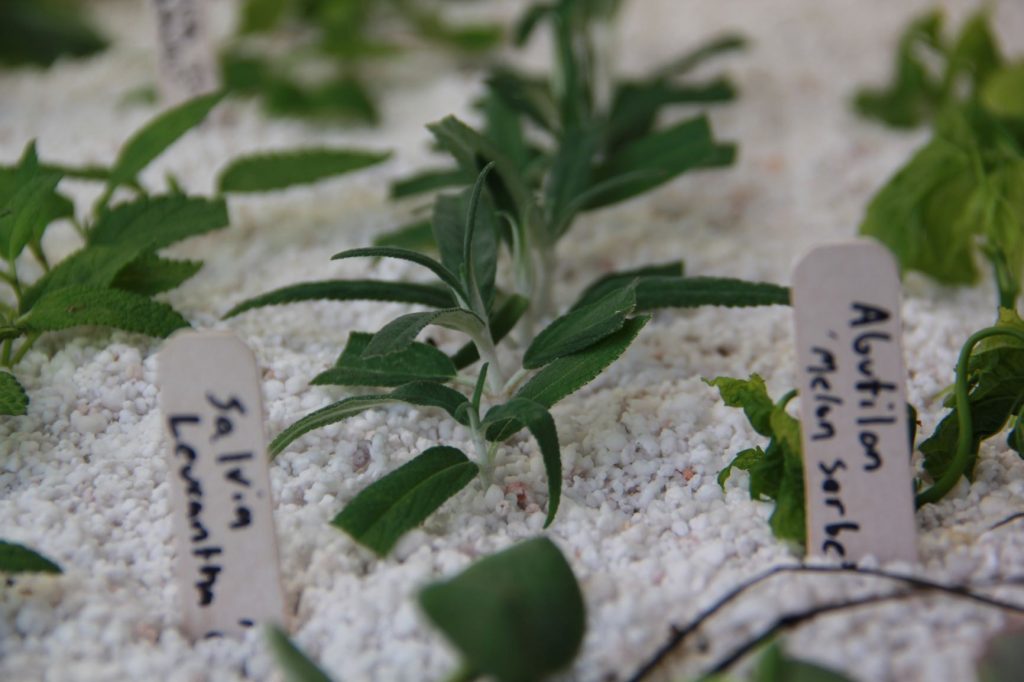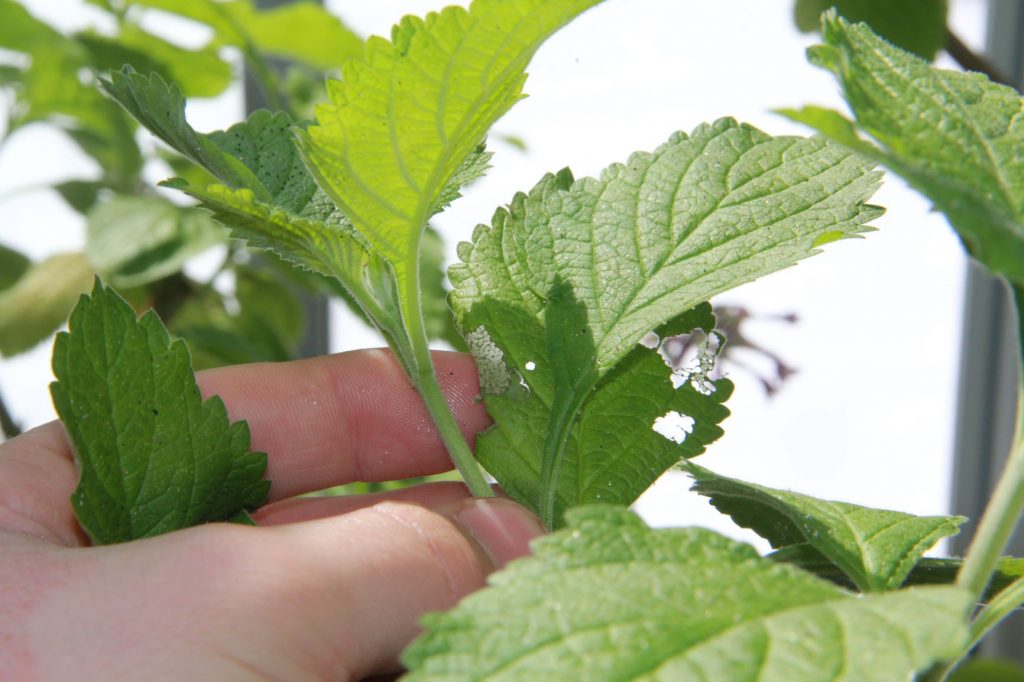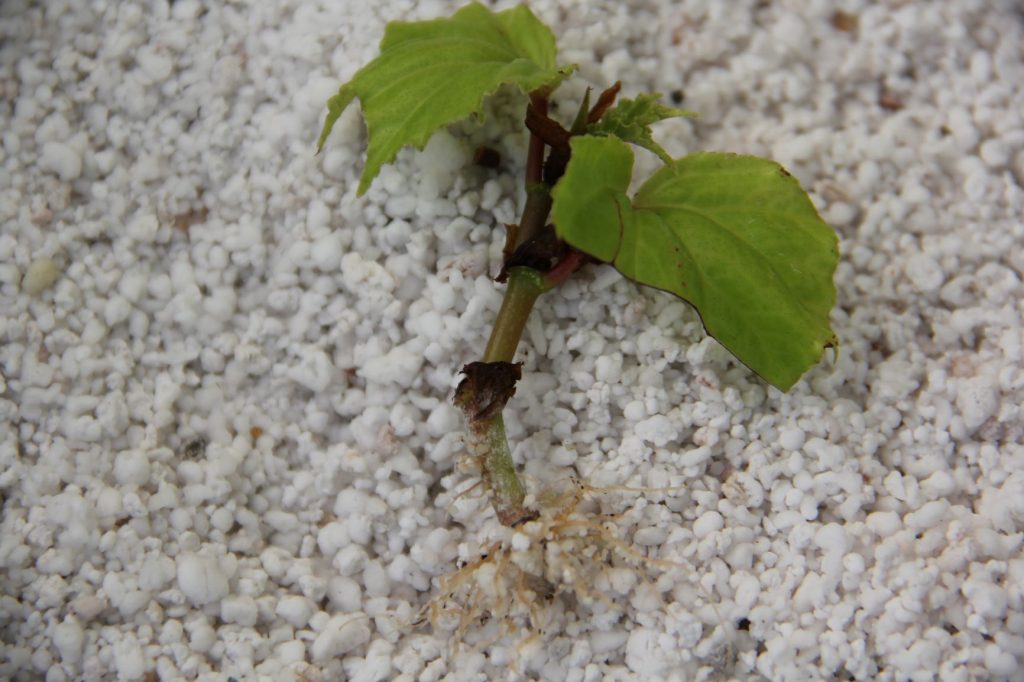Cut Of Life

As we continue to hunker down in the greenhouse through, dare I say it, what will hopefully be the last of the snow and ice, the future of glorious gardens is being determined. While the garden crew and I will continue to make decisions on plant selection, layout, and garden structures throughout the entire season, it is now when the growing process begins. Like mad scientists, we are creating new life to take hold in the landscape when the warm weather arrives. Gail and Betsy have been hard at work selecting and germinating a wide variety of seeds, carefully monitoring the timing to make sure each plant is ready at the proper point in the season. As for me, I’ve been playing around with a variety of existing plants, taking cuttings to introduce fresh young plants and increase our supply without having to spend money or leave the greenhouse.

Cuttings are a method of plant propagation, or reproduction by natural processes. Brian Maynard, my plant propagation professor, described propagation as “playing God”. I still have several plants I produced from cuttings during my time down at URI. My favorite part about taking cuttings is the experimentation that goes into it. Results will change depending on cutting size, media, and rooting stimulants (hormones) used, among other factors. Certain plants will root easier than others, and it is always exciting when a cutting you weren’t sure about is a success. Cuttings are also a great way to preserve your collection. There is a certain joy in creating clones of an adored old plant that is struggling.

Most cuttings we take at Blithewold are stem cuttings, one of the easiest ways to propagate annuals and perennials. When taking stem cuttings, it’s important to find soft new growth on your specimen plant. Cut off no more than 3 internodes (segments or space between leaf growth). It is best to soak your cuttings in water for up to 24 hours, allowing water to move through the cutting. Keep leaf surface area to a minimum, as this will help limit water loss through evaporation. There should be no flowers or flower buds on your cutting, remove if present. To increase rooting, we dip our cuttings in a rooting powder called Bontone II ( a hormone that speeds up rooting development). All you have to do is dip it in once – a little is all you need. We stick our cuttings in solid perlite. Different plants prefer slight changes in media, but generally most herbaceous material does well in straight perlite. We are blessed with an automated mist system that goes off every hour or so. It is important to keep your media moist. Different plants root at different speeds; softly tug your cutting to test for resistance. When the roots have taken hold, carefully scoop your fledgling out of the media, pot it up, and you’ve got yourself a new baby plant.

